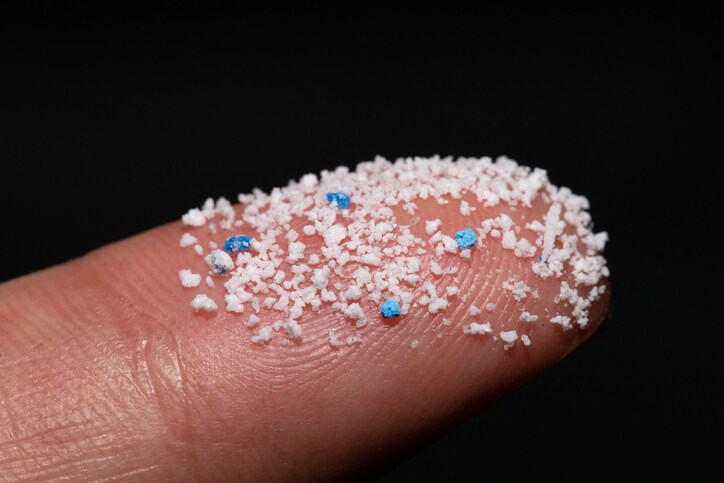Microplastic pollution
From beverage bottles and food packaging to household products and industrial components, plastics power our everyday lives. Yet, unfortunately, the prevalence of plastics in the environment is a pollution problem.
One of the most persistent and intractable problems is the breakdown of plastic waste into “microplastics,” which are classified as pieces of a polymer material from 5 millimeters to 1 micron in size. Several studies of marine animals—from corals and phytoplankton to large crustaceans and fish—find a shocking number of microplastics in fresh waters and oceans. Moreover, research has shown that microplastics are consumed by marine biota and then transferred up the food chain, harming birds and even humans.

Small plastic pellets on one’s finger. As environmental scientists study the harmful effects of microplastic pollution on the environment, many are turning to FTIR spectroscopy and Raman spectroscopy to identify and classify these pollutants.
Environmental research and microplastics
Understanding the effects of this microplastic pollution has become the next challenge for environmental scientists. Researchers are studying the effects of microplastics as they break down and leach chemicals. They are examining how microplastics act as sponges that absorb heavy metals and other toxins, which are then passed through the food chain. They are also exploring how individual organisms respond to microplastics in a given ecology.
Techniques in microplastic pollution research
As environmental scientists sort, isolate, and chemically identify the compounds in microplastics, many are turning to two complementary vibrational spectroscopy techniques: Fourier Transform Infrared (FTIR) spectroscopy and Raman spectroscopy.
FTIR is particularly adept at the chemical classification of various polymeric compounds due to the technique’s ability to recognize minor differences in molecular compositions—for example, discriminating between high- and low-density polyethylene. FTIR microscopy is capable of analyzing particles down to 10 microns.
Another vibrational technique, Raman spectroscopy, can measure particles down to 1 micron. Raman microscopy provides information about crystal lattices and molecular backbone structures. Raman is also a good technique for studying materials in aqueous samples.
FTIR and Raman are highly complementary techniques. Generally speaking, compounds that do not lend themselves to Raman analysis are good FTIR samples. Where FTIR cannot identify a compound, Raman is likely an ideal candidate. Both techniques are non-destructive, meaning that samples are available for further analyses by other lab techniques.
Rapid and easy to use, with advanced software that can sort through multicomponent chemistry, both FTIR and Raman microscopes are essential instruments for identifying and classifying microplastic pollutants.
To learn more about methods for identifying and quantifying microplastic pollution in the environment, please watch Thermo Fisher Scientific’s on-demand webinar, Characterizing Microplastics & Nanoparticles.
///
Subscribe now to receive Accelerating Microscopy updates straight to your inbox.
Speak with an expert: https://www.thermofisher.com/blog/microscopy/speak-with-an-expert/




Leave a Reply